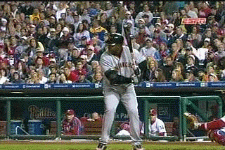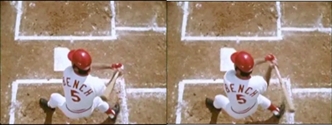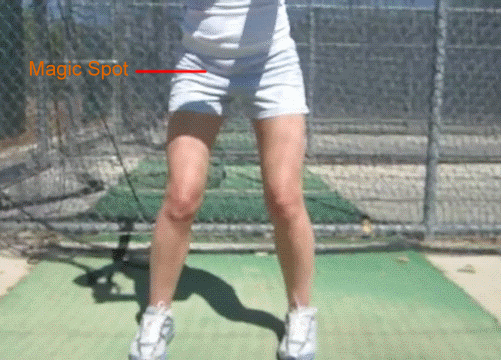I guess you missed my answer.
The weight is against the front side, on the front foot, while the swing is still in the lag position.
Hips are turning, and the rear foot gets pulled forward.
As many times i stare at high level swings in kinovea, i can see no great push from the rear foot, the dirt shows the toe is dragging.
The back foot looks like a walk off, from the side of the big toe.
From the quotes i have been reading, some of you think the swing happens before the bat even gets below the deltoid, and pure momentum, carries the rest of the swing through, riding the rear hip.
I love the one legged golfer analogy, like it proves the swing happens all because of the back leg.
So, looking at the clips below. You see the weight leave the rear foot around the "lag position" (assuming that you see the lag position with the bat on the deltoid, I believe that lag is the whole time the barrel is being pulled by the rear hip)? Can you honestly look at the Bonds clips below and say he didn't get the power from his back leg? It appears to me that Bonds still has weight on that back foot. Also, where does Bonds rear foot get dragged forward?
I do believe that the barrel is gone once it gets just past the traditional lag position. The point of no return. The point the swing can no longer be checked.
So do you believe the swing is being supplied with power the whole way? If so, what is the point of separation? Why bother? just muscle it through the swing. There has to be a suddenness. There has to be a "stretch" and release. Why "stretch" something to only try to muscle it through the zone.









